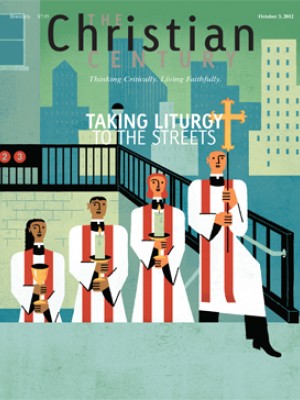Presidential fixation
President Obama and Governor Romney are in a close race, and every hour of campaigning counts. Many of these hours they spend trying to make personal connections with voters—cracking jokes, kissing babies, sampling local delicacies. Voters often find these activities more compelling than questions about the candidates’ character or vision.
But the primary problem with American political culture isn’t that we emphasize the wrong things when we scrutinize presidential candidates. It’s that too much of our scrutiny goes to these two human beings in the first place.
Americans overestimate what a president can do. The office is certainly more powerful than it used to be, especially when it comes to foreign policy. But on domestic issues, the main focus of this election, presidents are greatly constrained by the federal system of checks and balances—and by the fact that many decisions fall to state and local officials.
Read our latest issue or browse back issues.
Many Americans have deeply held feelings about Obama and Romney, but how many know much about senators, representatives and governors? How many of us even know the names of our statehouse representatives and city council members? There’s no question that it matters who occupies the White House. But it doesn’t matter more than every other branch and level of government combined.
What’s more, the presidency is shaped by political currents at these lower levels, because presidents are creatures of political parties—and are dependent on them. A change of executive-branch power essentially means that one party exits—not just the president but the party’s policy experts and political operatives, its congressional liaisons and potential judicial nominees, its networks of activists and campaign donors—and the other takes its place. So while candidates in a party primary work to define themselves against their opponents, presidents mostly just govern like Republicans or Democrats.
With the nominating conventions behind us, we have an official record of what these two parties currently stand for. Party platforms tend to take a harder rhetorical line than presidential nominees do; they exist in part as political tools to appease ideological purists and give the nominee something to appear more moderate than. Still, the platforms represent whatever partisan consensus exists—making them more useful to voters than most of the bromides coming from the candidates.
The Republican platform calls for converting Medicare into a defined-contribution voucher program, as well as for letting young workers choose between traditional Social Security and private investment accounts. The Democratic platform opposes both of these ideas. The Democratic platform supports same-sex marriage and abortion rights, while the Republican platform supports constitutional amendments banning each. The platforms take opposite positions on cap-and-trade, assault weapons, the Bush tax cuts for high earners and collective bargaining rights for public employees.
These are real differences. Our electoral politics would be healthier if we spent less time obsessing over Obama and Romney and more time examining the parties’ visions for public policy—and the candidates they are backing to represent us at the federal, state and local levels.







